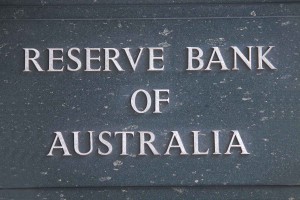There are more interesting articles, commentaries and analyst reports on the Web every week than anyone could read in a month.
Each Saturday morning I like to share some of the ones I’ve read during the week.
The weekend will be over before you know it, so enjoy some weekend reading.
RBA cuts rates again to kick-start economy
This week saw the RBA cut interest rates again to a historical low of 0.75%.
This article from Realestate.com.au looks at what this means for the economy.
The Reserve Bank of Australia has today opted to cut the official cash rate by 25 basis points to 0.75% in an effort to get the economy moving.
The RBA’s move to cut rates today is the third time the official cash rate has been chopped in 2019 and a sign that the broader economy is struggling, according to realestate.com.au chief economist Nerida Conisbee.
“There are a number of problems in the economy that aren’t being resolved quickly using monetary policy. The big one is the rising unemployment rate and resulting weak wages growth,” she says.
“The Australian economy remains lacklustre and there was a slight lift in the unemployment rate in August to reach a 12 month high. This has led to the RBA cutting rates in October.”
While there have been improvements in the housing market, the Board is looking to increase economic activity and get consumers spending again, according to Governor Philip Lowe.
“The Board took the decision to lower interest rates further today to support employment and income growth and to provide greater confidence that inflation will be consistent with the medium-term target.
The economy still has spare capacity and lower interest rates will help make inroads into that.
“It is reasonable to expect that an extended period of low interest rates will be required in Australia to reach full employment and achieve the inflation target. The Board will continue to monitor developments, including in the labour market, and is prepared to ease monetary policy further if needed to support sustainable growth in the economy, full employment and the achievement of the inflation target over time,” he says.
Grim global outlook
Uncertainty in the global economy isn’t helping the government, Australian businesses nor local banks – who don’t always pass changes to the official cash rate on to their customers.
“The other issues are global and this is where the RBA and the Australian government is really hamstrung. Interest rates, taxes and government building programs can all be adjusted to stimulate the local economy but the US-China trade war, Brexit and dramatic slowdowns in many parts of the world are out of our control.
“China’s growth has now slowed to one of its lowest rates in 30 years while in the US, investors are piling into bonds and other safe assets in preparation for a recession. Australia will be impacted and without a resources boom to save us like post Global Financial Crisis, it puts us in a dramatic situation,” Conisbee says.
What this means for your home loan
Given the current economic slowdown and the global uncertainty, there’s no guarantee that major Australian lenders will pass on today’s interest rate cut in full.
Previous rate cuts passed on in full to consumers have led to monthly savings of around $55 for the average Australian mortgage.
Today’s cut – when passed on in full – could lead to significant savings for mortgage holders, according to Finder insights manager Graham Cooke.
“If the cash rate drops to 0.75%, and your lender were to pass on the cut in full, an average mortgage holder could save $19,000 over 30-years on their mortgage.
“If it gets to 0.5%, that 30-year savings is nearly $38,000,” he says.
Cooke says that given that rates are a lot lower now, consumers should look for a better deal if their lender won’t pass on the rate cut in full.
Read the full article here
Approvals lowest since January 2013
It would appear that dwelling approvals are at an all time low.
This Blog by Pete Wargen explains the statistics.
Construction crunch
Attached dwelling approvals were much softer year-on-year in Sydney (1,461), Melbourne (1,328), and Brisbane (343!), as the ongoing collapse in approvals maintained the rage through August.
It’s not just an apartment phenomenon, though.
House approvals were also down 17 per cent from a year earlier, and right around the traps as construction finance has slowed.
Read the full article here
Sydney, Melbourne lead the way in property recovery but other cities aren’t necessarily following
When it comes to the property market recovery there’s no doubt Sydney and Melbourne have lead the way – so why aren’t all the other cities following?
An article on News.com.au delves into what’s going on.
The property market is continuing to show positive signs of resurgence but that’s not the case right across the board.
Home values are up, and interest rates are down.
One month into the spring selling season and the Australian property market appears to be sprouting signs of a full blown recovery — at least for its two largest cities.
The RBA has dropped the official cash rate from the previous low of 1 per cent to an unprecedented 0.75 per cent, the same day that property data firm CoreLogic released its September Home Values Index.
The report showed the third consecutive month of gains, lifting the national value of housing by a cumulative 1.7 per cent since the market found a floor in May 2019.
The month-on-month lift of 0.9 per cent in national housing values was the largest monthly gain since March 2017. Much of the improvement is thanks to the rebound of our two biggest markets.
All eyes on Sydney and Melbourne
“While all regions are benefiting from low mortgage rates and improved access to credit, economic and demographic conditions in NSW and Victoria continue to outperform most areas of the country,” CoreLogic’s head of research, Tim Lawless said.
“Population growth is higher, unemployment is lower and jobs growth is stronger, providing a solid platform for housing demand.”
The index also reported that Australia’s two largest cities have seen a “rapid bounce-back” in home values over the past two months, with Sydney up a cumulative 3.3 per cent and Melbourne up 3.2 per cent in August and September.
There is still a long recovery road ahead, however, as housing values remain 11.9 per cent below their July 2017 peak in Sydney and 7.9 per cent below Melbourne’s November 2017 peak.
Buyers back in business
Nerida Conisbee, chief economist of realestate.com.au said there is a definite shift in market sentiment this spring.
“There is no doubt that buyers are back, particularly in Sydney and Melbourne,” she said.
“Search activity has increased significantly in both cities and this is flowing through to pricing, particularly for premium suburbs.
It’s likely we’ll see a ripple effect to other parts of the market over the rest of the year.”
Historically low interest rates have already played their part in giving the overall market a kickstart Ms Conisbee added.
“The market is definitely recovering. There has been a lot of stimulus — interest rate cuts, tax cuts and an easing of access to finance,” she explained.
Beyond the big two
But not all capital cities are behaving like their larger counterparts.
“Most other parts of Australia have been operating very differently to Sydney and Melbourne over the past two years,” Ms Conisbee said.
“Most of Tasmania and regional Victoria has seen very solid conditions while Adelaide has continued to do what Adelaide tends to do — remain steady while other markets oscillate.”
According to the Home Values Index, Adelaide is down 1.6 per cent from its peak.
“Perth and Darwin continued to tumble, Brisbane remained pretty steady, despite overblown fears of too many apartments,” she said, based on the CoreLogic data showing Perth is down 21.3 per cent since its highest point, Darwin is down 30.8 per cent but Brisbane is down 7.9 per cent.
Read the full article here
The big banks are refusing to pass on the RBA’s interest rate cut in full – and the government isn’t happy about it
Despite the interest rate announcement, it would seem the big banks are not on board.
An article from Business Insider looks into what’s going on and what this could mean for the market.
That’s the eternal dilemma of the Reserve Bank of Australia (RBA), and one that is becoming a serious problem as the latest cut on Tuesday pulls Australia closer and closer to 0%.
After it moved to slash the interest rate to 0.75% at its October meeting, all eyes turned to the banks to follow its lead.
“It is the Government’s expectation that the banks will pass on this twenty-five basis point rate cut in full,” Treasurer Josh Frydenberg told the media following the RBA’s Tuesday cut.
That ‘expectation’ however always looked unlikely to match up with reality.
Of the big four banks, only the Commonwealth Bank (CBA) and the NAB have so far announced they would adjust their rates at all – but neither was really passing on the cut in full.
The majority of CBA customers with standard variable loan rates will receive just a 0.13% reduction.
The exception being the still-higher rate on investor interest-only home loan.
They will be reduced by the full 0.25% cut.
Similarly over at NAB, customers will receive a 0.15% cut to its standard variable rates.
Like CBA, its investor-only interest rates will be slashed by twice that, 0.30%.
ANZ and Westpac meanwhile had not made a squeak about the rate cut at the time of publication.
If the four were to pass on full cuts, it would have put hundreds of dollars back into the pockets of mortgagors.
“What [a 0.25% cut] means for an Australian family with a mortgage of $400,000 is $720 less a year in interest payments.
That’s a significant benefit to an Australian family,” Frydenberg said.
The banks’ refusal to pass that on not only frustrates customers but also helps mute the impact of the cuts in the first place.
“The Reserve Bank Governor, only a week ago, made a speech where he said it would be unhelpful for the bank to ignore these global movements downwards in interest rates because it would make it obviously more difficult to meet their objectives of the inflation target as well as full employment,” Frydneberg said.
The banks, however, have less room to move as interest rates continue to fall.
The interest rates they offer on deposits cannot go much lower, and thus the ones they charge on loans are also approaching a limit.
To cut beyond a point would begin cutting into the — admittedly very healthy — profit margins of the banks.
On the other side of the equation, by only passing on around half the 0.25% interest rate cut, Australians are left with half the extra money they could be.
That, in turn, restricts spending, reducing stimulus to the economy which is the overall point of cutting rates in the first place.
RBA governor Philip Lowe has previously admitted that more rate cuts will do little to help the economy.
If cuts aren’t even passed on in full that is doubly the case, especially considering spending is already under strain.
“Quite simply, the economy requires more stimulus. Ideally, the federal government would rise to the occasion.
Fiscal policy can be better targeted in the current environment and could stimulate the economy without pushing house prices and debt higher,” Indeed Asia-Pacific economist Callam Pickering said in a note issued to Business Insider Australia.
Read the full article here
A look inside some of the most famous TV houses of all time
Ever wondered about the stories behind TV’s most famous houses?
This article on Domain.com.au takes an insider look …
The best TV houses are like members of the cast.
Over the years of watching a show with a distinctive, evocative house or apartment in it, you develop the same kind of warm (or depending on the show, chilling) memories and feelings you have grow in your own home.
That’s the kitchen where Adam Scott kissed Reese Witherspoon in Big Little Lies, or that’s the living room where Monica proposed to Chandler! Nawww.
A great TV house is aspirational, usually flasher and better decorated that any real life equivalent would be – Hello, Carrie Bradshaw, I’m looking at you and your artfully messy walk-in wardrobe.
We’d love to take a good old nose around them, peek in the cupboards and behind the couches.
So let’s do that… sort of, anyway.
Here’s a short list of some of the best TV houses:
Monica Gellar’s purple NYC palace
There’s only one way to start a list of the best TV houses and that’s with Monica’s purple apartment from 1990s sitcom touchstone, Friends.
The scene of so many of the show’s most beloved moments (Brad Pitt’s cameo?), that distinctive colour was a deliberate attempt by set designer John Schaffner to make the home memorable… As if it wasn’t memorable enough that a mediocre chef in New York could afford a giant two-bed apartment with a balcony.
True, the home had once been Monica and Ross’ Nana’s, which suggests it was seriously rent controlled.
Full and Fuller House, San Francisco
There’s only one way to start a list of the best TV houses and that’s with Monica’s purple apartment from 1990s sitcom touchstone, Friends.
The scene of so many of the show’s most beloved moments (Brad Pitt’s cameo?), that distinctive colour was a deliberate attempt by set designer John Schaffner to make the home memorable… As if it wasn’t memorable enough that a mediocre chef in New York could afford a giant two-bed apartment with a balcony. True, the home had once been Monica and Ross’ Nana’s, which suggests it was seriously rent controlled.
The three storey, Victorian/Queen Anne villa in one of the Bay City’s most coveted neighbourhoods was almost the sixth character in 1990s sitcom Full House. A grand dame with her frothy white scrollwork, eaves and pillars, and brilliant scarlet door, she represented the cosy comfortability that underpinned the whacky goings on at the Tanner household.
The show’s creator bought the house in 2016 when Fuller House, a sequel to the original show, was green lit. He returned the home to its Full House glory and it was used for exterior shots until the show was cancelled in 2019, when it was put on the market. Sitting in the heart of San Francisco’s Pacific Heights district, the house is is likely to fetch significantly more than the US$4.5 million (AUD$6.6m) Franklin paid for it in 2016.
To the manor born
Speaking of significant houses that feel like living breathing members of the casts that inhabit them, Highclere Castle, known to fans as Downton Abbey, is surely the grandest home on any Best TV Homes list.
Brady met a lovely lady
According to The Brady Bunch, the distinctive house in Studio City, California was designed by Mr Brady for his sprawling blended family.
When the real house went on sale in 2018, fans of the show were worried – would it be torn down or God forbid, be modernised?
They needn’t have fretted. It was bought by HGTV to be part of a reno show that will return the Brady home to it’s Mid-Century glory. And the Bradys will be doing the work…
Live Big Little Lies
You can spend a week pretending to be Reese Witherspoon in Big Little Lies – just without the murder and cover up – by renting her gorgeous home from the show.
It’s only US$3000 – $5000 (AUD$4429 – $7382) a night!
Sing like a Soprano
See Tony Soprano’s house from the street and you can almost imagine James Gandolfini walking down the long sweeping drive in a terry towel bathrobe to get the post – it’s been unchanged since the award winning series.
It went on sale in June 2019 for a whopping US$3.4 million (AUD$5.02m), which its then owner called a “starting price”.
It might be worth it.
The home sits on 1.5 acres, in New Jersey, just a hop skip and a subway ride from New York, has its own facebook page, and is still buzzing with all the Big Mob Energy.
On the downside, strangers in terry towel robes randomly appearing on your driveway for the rest of time.
Black gold, Texas tea
Move over Downton, here’s a US property that’ll give your crennels a run for their money – lots and lots of money.
The house used in the first season of The Beverly Hillbillies, that classic fish-out-of-water show from the 1960s, went on the market in June for the bargain price of US$195 million (AUD$287m).
Read the full article here
from Property UpdateProperty Update https://propertyupdate.com.au/weekend-reads-must-read-articles-from-the-last-week-105/















No comments:
Post a Comment